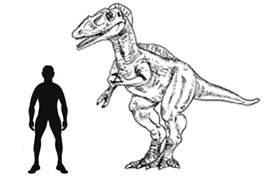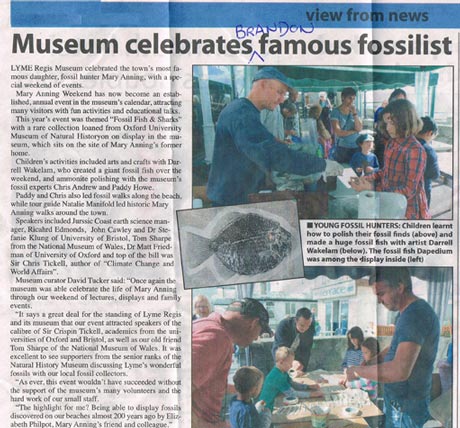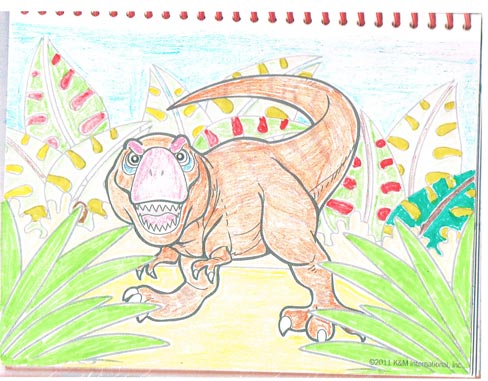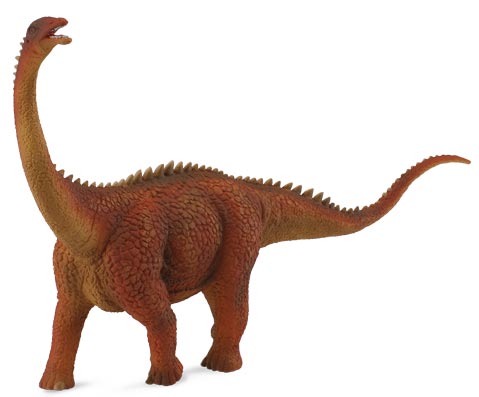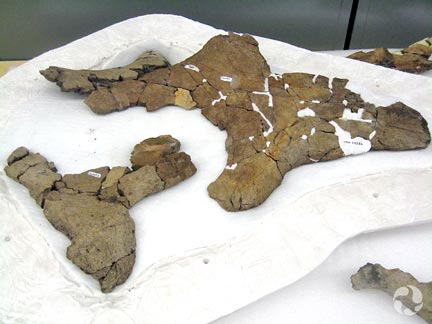Trying to Unravel the Carcharodon Family Tree
The ancestry of the famous shark that starred in “Jaws” is better understood after the publication of a scientific paper by American researchers that provides details of a transitional fossil between prehistoric Mako sharks and extant Great Whites.
Great White Sharks
Carcharodon carcharias (Great White Shark), was believed by many scientists to be a direct descendant of the huge Megalodon shark (Carcharodon megalodon), one of the largest fish to have existed in the last twenty million years or so. Fossil teeth of the Megalodon have been found in Europe, Asia, the Americas and in Australasia, this large predatory shark that could have reached lengths in excess of sixteen metres seems to have been very widely distributed. However, scientists were uncertain as to the exact phylogenetic relationship between this giant shark that became extinct approximately 1.6 million years ago and extant species such as the Great White.
The problem with Lamniformes, the Order to which sharks belong is that they have skeletons made of cartilage. This is rarely preserved in the fossil record, so there are few body fossils (other than the teeth) for palaeontologists to study. However, the discovery of a remarkably well-preserved set of jaws, some articulated bones and numerous teeth, a number still “in situ” with the jaws, from a remote location in Peru has provided scientists with an important clue as to the origins of today’s Great Whites. This fossil suggests that Great Whites, although having a similar body plan and lifestyle to the Megalodon, probably did not evolve from the same shark lineage. It seems that Great White Sharks may share a common ancestor with the nektonic Mako shark.
The phylogenetic relationship between those shark species that make up the Carcharodon genus remains somewhat muddled. Megalodon itself, may turn out to be more closely related to Tiger sharks (Galeocerdo cuvier) than to today’s Great Whites.
It is true that modern-day Great White Sharks have similar teeth to the extinct Megalodon. The shape of the serrations along the teeth edge are very similar, but when examined under a microscope it can be seen that the denticles (the scientific term for these serrations) are very different. Extinct Megalodon teeth show very fine serrations whilst the denticles on Great Whites are very coarse and much larger in comparison.
Transitional Fossil
Professor Dana Ehret, of Monmouth University (New Jersey, United States), the lead author of the research paper suggested that one of the reasons why Megalodon was believed to be the ancestor of Carcharodon carcharias was that Great Whites were used by anatomists and palaeontologists to make mounted exhibits of Megalodon for museums and other institutions. If a modern shark had been used as the basis to put together Megalodon then it is not surprising that reconstructions of Megalodon resemble a Great White.
Professor Dana Ehret Examines the Shark Specimen

Fossil provides insight into the ancestry of Great White Sharks.
Picture credit: Florida Museum photograph by Jeff Gage.
Since both Carcharodon carcharias and Carcharodon megalodon have serrations (denticles) on the cutting edge of their teeth, this was thought to be an indication that these species were very closely related. However, when examined under a microscope differences can be seen. Today’s Great Whites have very coarse serrations whilst those on the extinct Megalodon are much finer.
Serrations on the cutting edge of shark teeth can be found in many species of extant and extinct shark. Some indeed, do indicate phylogenetic relationships, whilst other examples are probably as a result of convergent evolution. Convergent evolution occurs when two organisms, not necessarily closely related evolve in similar ways as they adapt to particular circumstances and environmental pressures. For instance, both bats and most birds can fly, both have evolved wings but the structure of these wings is very different; birds and bats are not closely related.
Carcharodon hubbelli
The newly described species, known as Carcharodon hubbelli has been named from a beautifully preserved shark specimen that was found at a fossil dig site, part of the Pisco Formation of south-western Peru. The very dry atmosphere has enabled fossils to be preserved in exceptional condition even when eroded out of the sedimentary rock. Carcharodon hubbelli material consisted of the jaws, teeth, some of which were still in situ in the jaws and other elements of the fossil including part of the backbone of the animal. The Pisco Formation has already provided scientists with some amazing fossils that give an insight into Pliocene marine fauna with the discovery of a gigantic predatory whale (Leviathan melvillei), that probably fed on Megalodons.
To read more about L. melvillei: Nightmare Whale from Prehistory.
A Replica of the “Nightmare Whale from Prehistory”
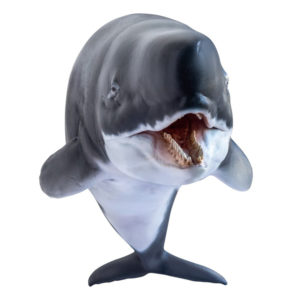
PNSO Requena the Livyatan prehistoric whale model anterior view.
The new shark species provides evidence that Great Whites are descended from ancient Mako (mackerel) sharks. Described as a “transitional species”, C. hubbelli, named after Gordon Hubbell, the scientist who first found the fossil, suggests that Great Whites are not the descendants of Carcharodon megalodon.
The blend of Mako and Great White anatomical characteristics include the curving outwards of the third anterior tooth in the jaws of the Peruvian specimen. This is very similar to the dentition seen in modern Mako sharks today. Initially, the fossil had been dated to around five million years ago, but this presented a problem to the palaeontologists who suspected that this specimen represented an ancestor of today’s Great Whites. Five million years ago, the Great White lineage was already around so how could C. hubbelli be ancestral to this part of the Carcharodon family?
A biostratigraphical study of invertebrate fossils found in the strata established that this fossil was actually much older, around 6.5 million years old, making it more likely that this specimen does represent an ancestral or intermediate from of Great White.
The American based research team have concluded that “Jaws” is essentially a highly modified Mako shark (Isurus genus). Mako sharks are predators of open water and very streamlined. They are primarily fish-eaters (piscivores), but they have been known to become aggressive and attack people. The Great White lineage adapted to eating larger prey such as dolphins, turtles and seals. Mako sharks are occasionally caught by fishermen off the coast of Cornwall. These sharks having followed the Gulf Stream eastwards, but Makos are more normally associated with warmer water.
Everything Dinosaur acknowledges the assistance of a media release from Florida Museum in the compilation of this article.
Please note
The taxonomic classification of Megalodon has been revised, it is now known as Otodus megalodon.
To purchase a replica of the giant, prehistoric whale L. melvillei and models of prehistoric fish: PNSO Age of Dinosaurs Models and Figures.




